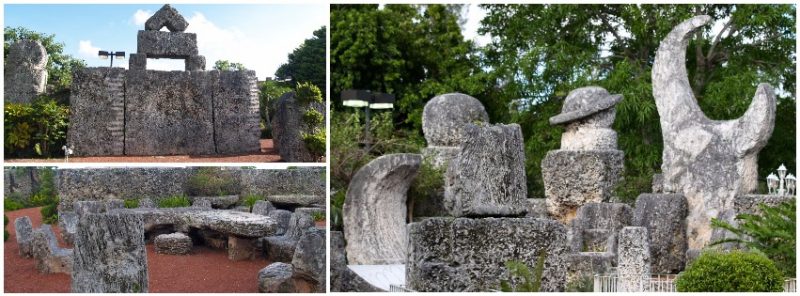Coral Castle is an oolite limestone structure created by the Latvian American eccentric Edward Leedskalnin located in Leisure City, Florida, in Miami-Dade County at the intersection of South Dixie Highway (U.S. 1) and SW 157th Avenue. The structure comprises numerous megalithic stones (mostly limestone formed from coral), each weighing several tons.
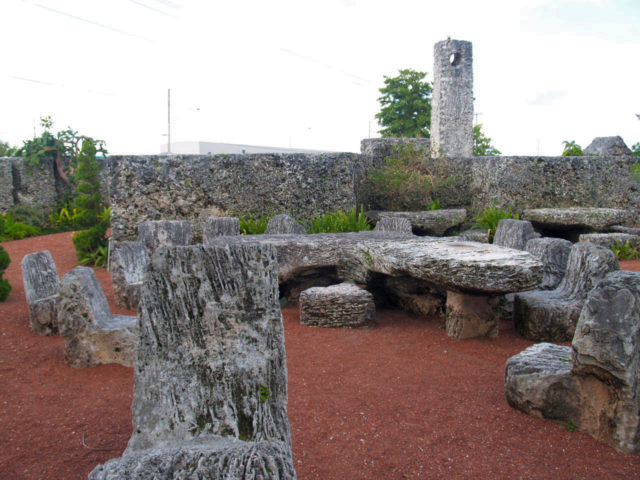
According to the Coral Castle’s own promotional material, Edward Leedskalnin was suddenly rejected by his 16-year-old fiancée Agnes Skuvst in Latvia, just one day before the wedding. Leaving for America, he came down with allegedly terminal tuberculosis, but spontaneously healed, stating that magnets had some effect on his disease.
Edward spent more than 28 years building the Coral Castle, refusing to allow anyone to view him while he worked. A few teenagers claimed to have witnessed his work, reporting that he had caused the blocks of coral to move like hydrogen balloons. The only tool that Leedskalnin spoke of using was a “perpetual motion holder”.
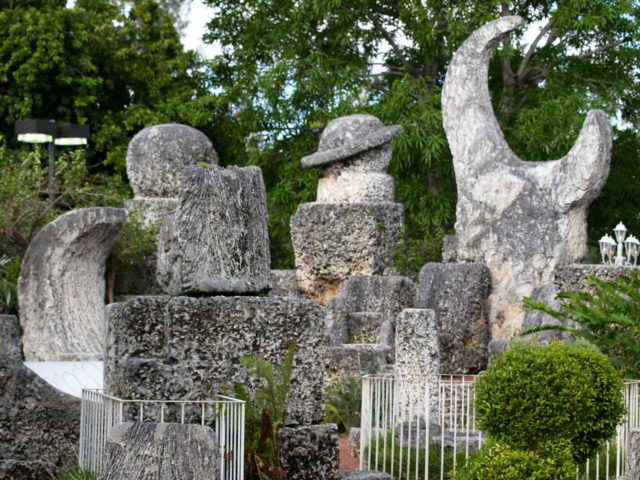
Leedskalnin originally built a castle, which he named “Ed’s Place,” in Florida City, Florida, around 1923. He purchased the land from Ruben Moser whose wife assisted him when he had a very bad bout with tuberculosis. Florida City, which borders the Everglades, is the southernmost city in the United States that is not on an island. It was an extremely remote location with very little development at the time. The castle remained in Florida City until about 1936 when Leedskalnin decided to move and take the castle with him to its final location at 28655 South Dixie Highway Miami, FL 33033. The Coral Castle website states that he chose to move in order to protect his privacy when discussion about developing land in the area of the castle started. He spent three years moving the Coral Castle structures 10 miles (16 km) north from Florida City to its current location in Leisure City, Florida.
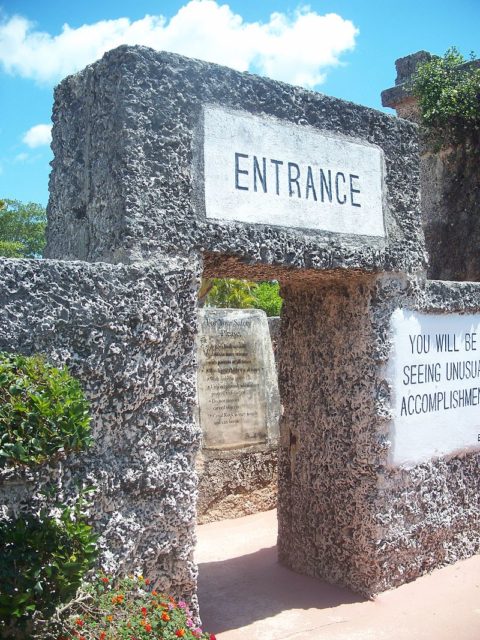
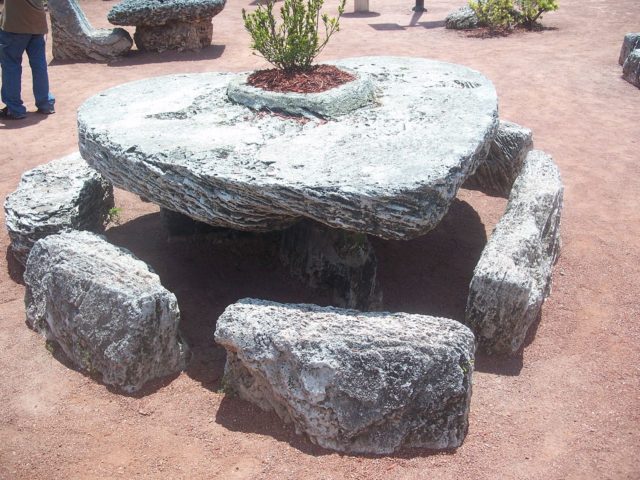
Leedskalnin named his new place “Rock Gate” after the huge rear swinging gate he built into the back wall. He continued to work on the castle up until his death in 1951. The coral pieces that are part of the newer castle, not among those transported from the original location, were quarried on the property only a few feet away from the castle’s walls. The pool and the pit beside the southern wall are quarries. The east and west quarries have been filled in.
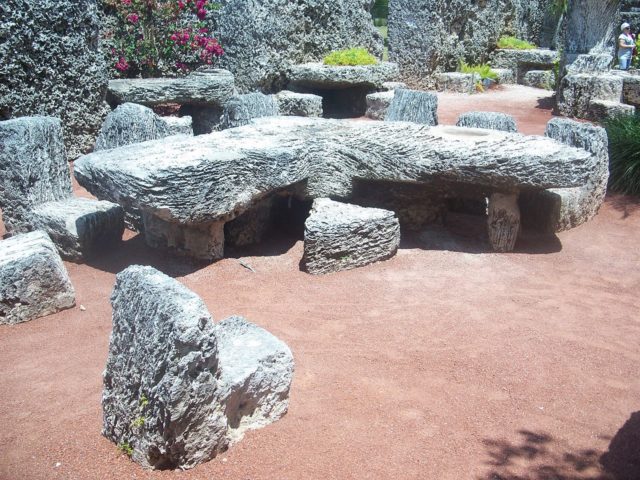
At Florida City, Leedskalnin charged visitors ten cents apiece to tour the castle grounds, but after moving to Homestead, he asked for donations of twenty five cents, but let visitors enter free if they had no money. There are signs carved into rocks at the front gate to “Ring Bell Twice.” He would come down from his living quarters in the second story of the castle tower close to the gate and conduct the tour. Leedskalnin never told anyone who asked him how he made the castle. He would simply answer “It’s not difficult if you know how.”
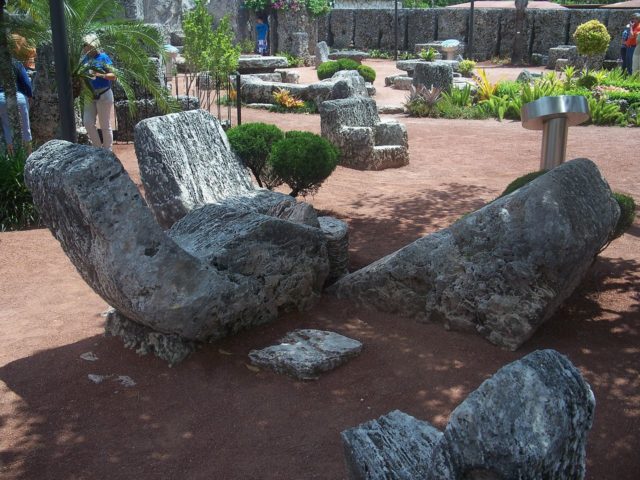
When asked why he had built the castle, Leedskalnin would vaguely answer it was for his “Sweet Sixteen”. This is widely believed to be a reference to Agnes Skuvst (whose often-misspelled surname “Scuffs” is not even a legitimately formed Latvian word). In Leedskalnin’s own publication A Book in Every Home, he implies his “Sweet Sixteen” was more an ideal than a reality. According to a Latvian account, the girl existed, but her name was actually Hermīne Lūsis.
When Leedskalnin became ill in November 1951, he put a sign on the door of the front gate “Going to the Hospital” and took the bus to Jackson Memorial Hospital in Miami. Leedskalnin suffered a stroke at one point, either before he left for the hospital or at the hospital. He died twenty-eight days later of Pyelonephritis (a kidney infection) at the age of 64. His death certificate noted that his death was a result of “uremia; failure of kidneys, as a result of the infection and abscess.”
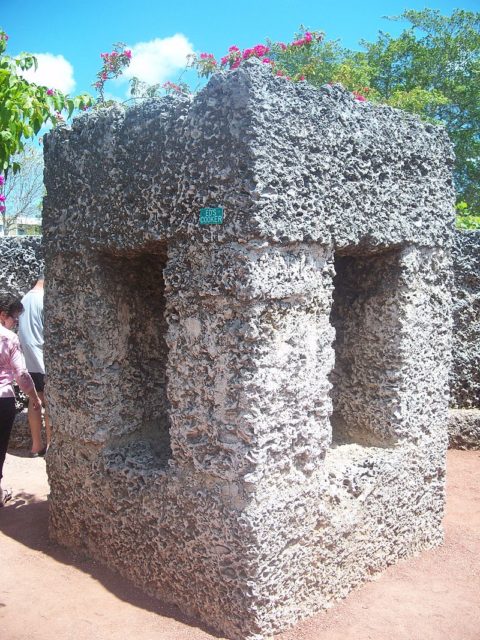
While the property was being investigated, $3,500 was found among Leedskalnin’s personal belongings. Leedskalnin had made his income from conducting tours, selling pamphlets about various subjects (including magnetic currents) and the sale of a portion of his 10-acre (4.0 ha) property for the construction of U.S. Route 1. As Leedskalnin had no will, the castle became the property of his closest living relative in America, a nephew from Michigan named Harry.
The Coral Castle website reports that the nephew was in poor health and he sold the castle to an Illinois family in 1953. However, this story differs from the obituary of a former Coral Castle owner, Julius Levin, a retired jeweler from Chicago, Illinois. The obituary states Levin had purchased the land from the state of Florida in 1952 and may not have been aware there was even a castle on the land.
The new owners turned it into a tourist attraction and changed the name of Rock Gate to Rock Gate Park, and later to Coral Castle.
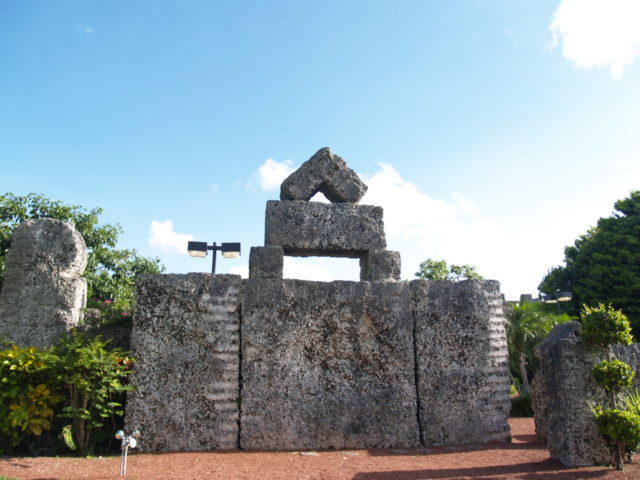
In January 1981, Levin sold the castle to Coral Castle, Inc., for $175,000. In 1984, the property was listed on the National Register of Historic Places. It was added under the name of “Rock Gate”, but the name on the list was changed to “Coral Castle” in 2011.
The stone sign just inside the property that says “Adm. 10c Drop Below” is not original to Coral Castle. Ed made this sign and placed it in front of his earlier location at Florida City when he tired of giving a “free show” to visitors who were careless and trampled his shrubbery. This sign was donated by the owners of Ed’s Place and placed here in recent years.
